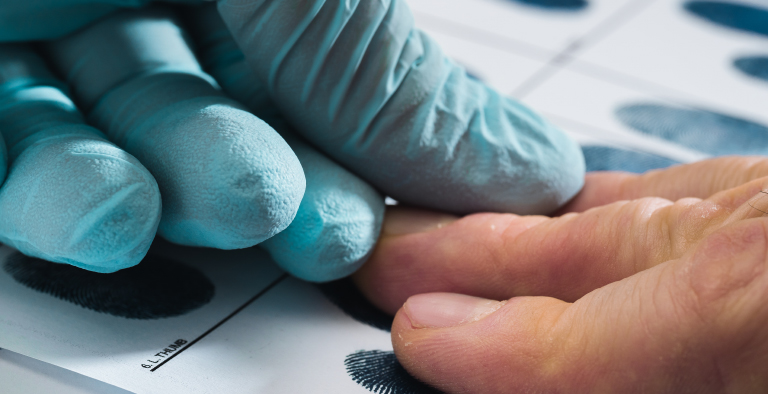True Crime Stories - Biometrics Brings Justice for the Vulnerable
The follow article contains potentially disturbing references to child abduction and sexual assault. “Any investigator has that one case they wished they’d finished, and this was mine. I just kept working on it. I wanted to get justice for that girl and her family.”  In September 1999, a 10-year-old girl was walking with two friends in a Cairnbrook, Pennsylvania neighborhood when they noticed a vehicle drive past them several times. Finally, the car stopped, and a man got out. He approached the three girls and asked for information about a yard sale in the area. Then, he suddenly grabbed the 10-year-old, forced her into his car and onto the floor of the passenger seat. He sped off, abducting the girl - allegedly holding a gun to her head and hitting her to keep her quiet. The man proceeded to drive to a remote location in the neighboring state of West Virginia and then sexually assaulted her. After the assault, he gave the girl a paper bag and napkin to clean herself. He then drove back to Pennsylvania where he dropped her off on the side of the road, and told her to count to 100 and then call her mother. Another driver happened upon the girl in distress and called the police. She was able to take investigators to the location of the assault and they collected the paper bag and napkin as evidence. After examining these items, a partial fingerprint and DNA was found. Both the partial print and the DNA profile were entered into the national databases. Much to the dismay of the girl’s family and the now fearful community, no matches came back. The primary investigator quoted above was Pennsylvania State Trooper Jeffrey Brock. While he was determined to find the perpetrator, it would be 5 years later, in 2004, when a hit on the DNA profile came through. The hit was found to match DNA profiles that had been submitted in two other similar abduction and assault cases. Sadly, there was no known identity linked to the DNA profile and all three cases remained unsolved. Years passed without any new developments. In the fall of 2018, 19 years after the 10-year-old girl’s abduction, Jeffrey Brock learned about enhancements to the FBI’s technology for identifying latent prints. He resubmitted the partial print from 1999 to the FBI. This time, the search resulted in a match to a man who had been arrested for an unrelated offense. They could finally link an identity to the print, which ultimately led to the arrest and conviction of Timothy D. Nelson. He is now serving a 30-year prison sentence. In this case, advancements in the matching algorithms and other related technologies were able to solve a previously cold case. This case also highlights the importance of enrolling the highest possible quality prints at the moment in time when people are arrested or applying for jobs. Sometimes, latent prints only provide a small bit of a fingerprint, so having high quality prints gives a much greater chance at providing justice for vulnerable people who have been irreparably harmed. To learn more about the authentication technology that made this possible, read this case study.
In September 1999, a 10-year-old girl was walking with two friends in a Cairnbrook, Pennsylvania neighborhood when they noticed a vehicle drive past them several times. Finally, the car stopped, and a man got out. He approached the three girls and asked for information about a yard sale in the area. Then, he suddenly grabbed the 10-year-old, forced her into his car and onto the floor of the passenger seat. He sped off, abducting the girl - allegedly holding a gun to her head and hitting her to keep her quiet. The man proceeded to drive to a remote location in the neighboring state of West Virginia and then sexually assaulted her. After the assault, he gave the girl a paper bag and napkin to clean herself. He then drove back to Pennsylvania where he dropped her off on the side of the road, and told her to count to 100 and then call her mother. Another driver happened upon the girl in distress and called the police. She was able to take investigators to the location of the assault and they collected the paper bag and napkin as evidence. After examining these items, a partial fingerprint and DNA was found. Both the partial print and the DNA profile were entered into the national databases. Much to the dismay of the girl’s family and the now fearful community, no matches came back. The primary investigator quoted above was Pennsylvania State Trooper Jeffrey Brock. While he was determined to find the perpetrator, it would be 5 years later, in 2004, when a hit on the DNA profile came through. The hit was found to match DNA profiles that had been submitted in two other similar abduction and assault cases. Sadly, there was no known identity linked to the DNA profile and all three cases remained unsolved. Years passed without any new developments. In the fall of 2018, 19 years after the 10-year-old girl’s abduction, Jeffrey Brock learned about enhancements to the FBI’s technology for identifying latent prints. He resubmitted the partial print from 1999 to the FBI. This time, the search resulted in a match to a man who had been arrested for an unrelated offense. They could finally link an identity to the print, which ultimately led to the arrest and conviction of Timothy D. Nelson. He is now serving a 30-year prison sentence. In this case, advancements in the matching algorithms and other related technologies were able to solve a previously cold case. This case also highlights the importance of enrolling the highest possible quality prints at the moment in time when people are arrested or applying for jobs. Sometimes, latent prints only provide a small bit of a fingerprint, so having high quality prints gives a much greater chance at providing justice for vulnerable people who have been irreparably harmed. To learn more about the authentication technology that made this possible, read this case study.
